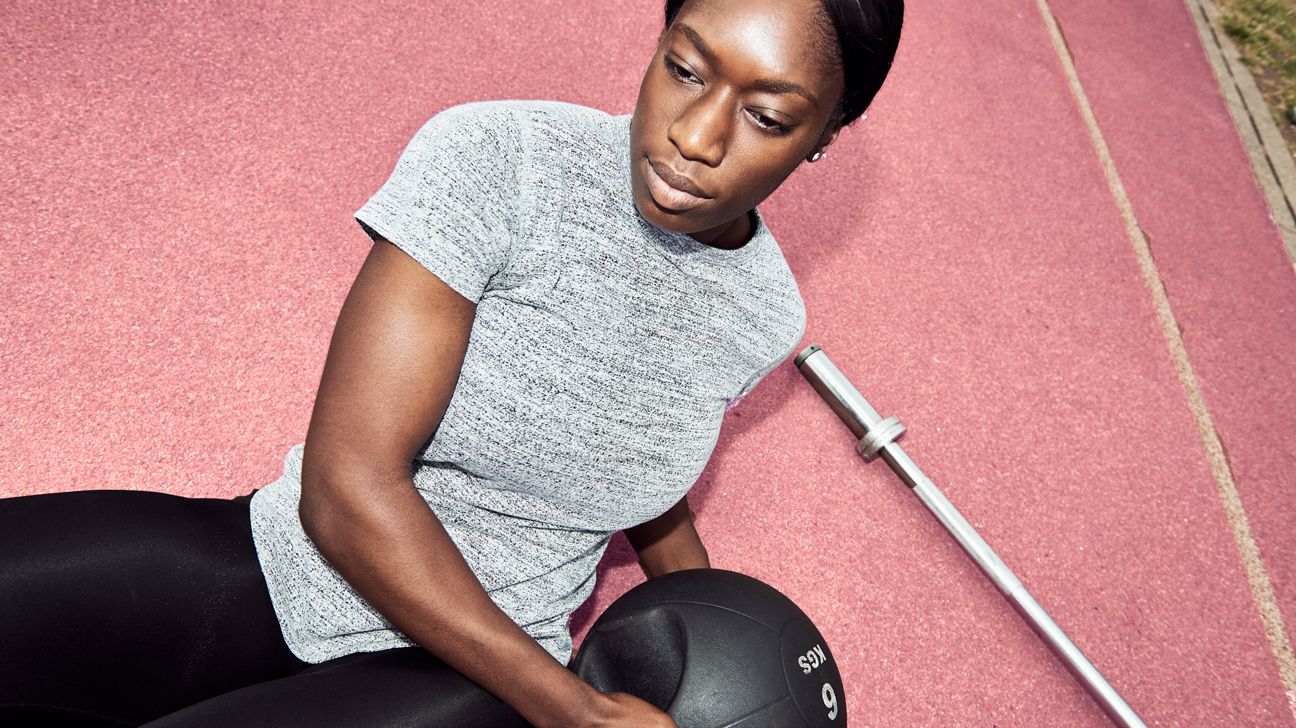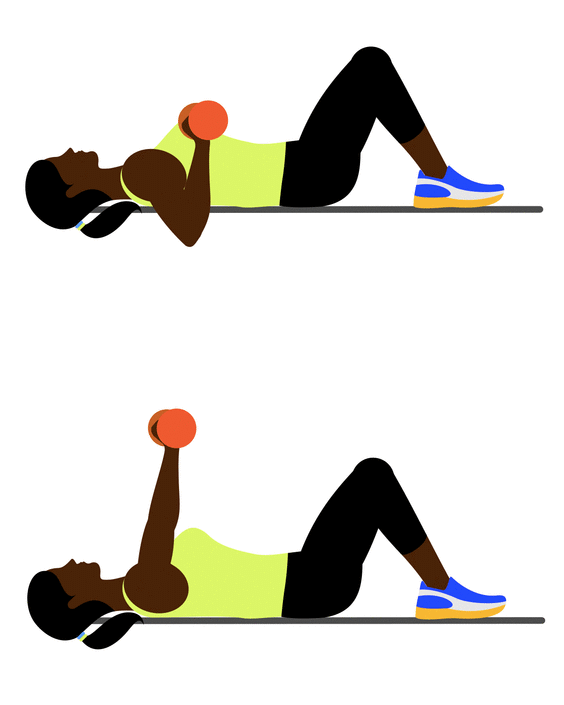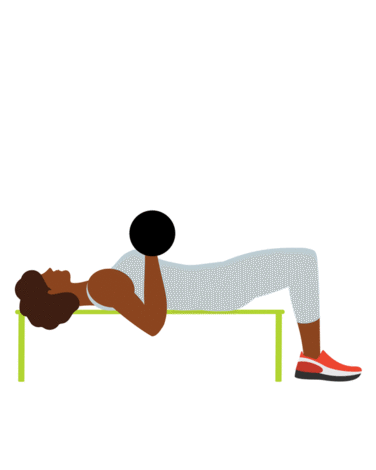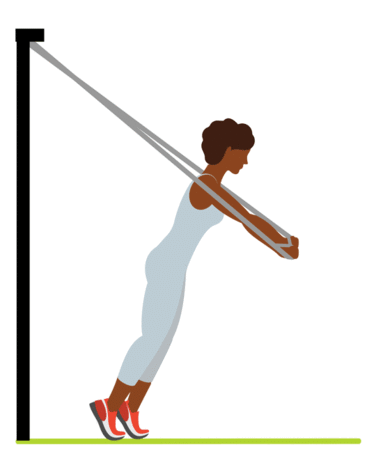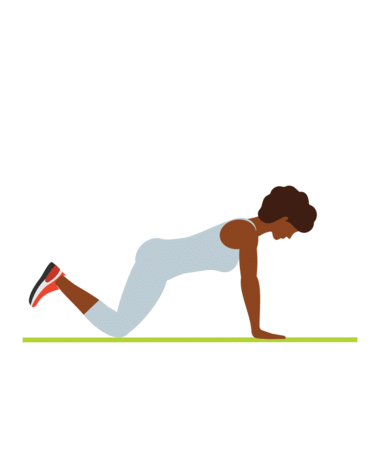“Don’t take that tone with me, private! Now drop and give me twenty.”
Push-ups are a fitness staple, but there’s a reason drill instructors love to use them as punishment: They can be super tough.
Sure, they look pretty basic, but so does “Baby Shark” until you get into the nuances of the lyricism. Anyone who has tried to eke out that last rep knows that push-ups are a humbling move, regardless of your skill level.
Love ’em or hate ’em, you can’t deny that they work a whole bunch of muscles: the chest and triceps, for starters, plus the lower back, legs, glutes, lats, shoulders, and core. That a lot of work for one “simple” push.
For folks who are just starting out, mastering the motions can be difficult and might even cause anxiety. But help is at hand: Studies have shown that there are plenty of other movements you can do to build out those muscles.
We’ll walk you through five moves, recommended by a personal trainer, that can take you to the next level: a confident-looking push-up that feels great.
A note before we start: The rep scheme is designed with heavier weights in mind. The reps should be challenging, but you should be able to complete all reps in each set without failing.
Lacee Lazoff, a trainer at Performix House, offers five moves for people who feel that push-ups can piss off. String them together for a complete workout.
Got your sights set on the even-loftier pull-up? We’ve got 17 exercises that can help with that too.
1. Overhead press
If push-ups make you feel like you’re in a little over your head, how about pushing dumbbells… over your head?
Try these steps to get into the push-up mindset without the pain:
- Hold a dumbbell in each hand, with wrists turned in to face each other and dumbbells level with your shoulders.
- Keep knees soft and core engaged.
- Press the weights up overhead, focusing on fully extending arms, then lower the weights (with control) back to shoulders to complete 1 rep.
We found 15 other exercises that can give you Thor’s shoulders (but not his hammer — none of us are worthy yet).
2. Dumbbell bench press
Ah, the classic bench press. The good news is that it puts far less strain on your arms than a push-up. You’re only lifting the weight, after all, and not your entire body.
(We’d suggest putting on Kanye’s “Lift Yourself” for inspiration, but on closer inspection it does just seem to be him repeating the words “poopedy scoop” over and over.)
This exercise should go as follows:
- Lie faceup on a bench.
- Hold the dumbbells on the outside of your shoulders, with palms facing your waist.
- Press the dumbbells up overhead so they’re straight over your chest.
- Slowly lower them back down to complete 1 rep.
Dumbbells are great — here are 30 other ways to use them.
3. TRX chest fly
This is essentially exercise equipment’s answer to the Running Man dance.
Give these steps a go to complete a rep:
- Stand with feet shoulder-width apart, facing away from the anchor point.
- Grab the handles with an overhand grip and extend arms in front of you at shoulder height. Lean forward so your body is at a diagonal.
- Using slow, controlled movements, spread arms out to a T (but keep those elbows slightly bent) as you lower your chest closer to the floor — this is where you seriously activate those chest muscles.
- Reverse the movement to return to the starting position.
TRX suspension training can be TRXellent for full body strength. Here are 44 TRXamples of TRXercises to try. (OK, we’re done. We’ll make our TRXit.)
4. Heavy med ball push
Push it! Push it real good! Medicine balls are a blessing when it comes to slowly building up resistance. And they can help you get ready for push-ups further down the line.
These steps will help you push yourself and the ball:
- Stand about 2 feet from a wall, with left foot slightly ahead of right foot and hips square.
- Hold a medicine ball at your chest. For the best results, use one that weighs between 10 and 14 pounds.
- Engaging your core, push the ball forward to the wall with enough force that it bounces straight back to your hands at shoulder height. That’s 1 rep.
Finished making your workout balls-to-the-wall? Here are 25 more medicine ball exercises for you.
5. Modified push-up
Oh, come on — it’s not technically a standard push-up, so give us some credit. It’s a great taster course for the real-deal push-up.
This can be your final metamorphosis into a push-up butterfly… or a similar metaphor involving an animal that looks more like it chugs protein shakes. Like a bear, perhaps. Or the mighty shoebill, a bird that looks like it bench presses trucks for fun.
You perform the modified push-up on your hands and knees, taking the following steps:
- Start in a tabletop position, then walk your hands another foot forward to create a straight line from shoulders to knees.
- Lower into a push-up, with feet rising off the floor as you lower your upper body. (This takes a lot of the work away from your abs and legs, so it’s a great way to train your shoulders and chest for the real thing.)
- Press back up to the starting position to complete 1 rep.
Two types of push-up not enough for you? No? Fine. Here’s 82 more.
“Push-ups can be very challenging, because upper-body strength and mobility is often a weak point,” says Lazoff.
“Be patient! Strengthening muscles takes time, and being able to execute a push-up with proper form takes practice and reps. Trying out alternative movements to build the strength for a complete a push-up is a great option.”
Lazoff suggests tackling these exercises the following way for maximum impact:
- 10 reps of each per round
- 6 rounds
- well-earned rest of up to 2 minutes between rounds
Do it twice weekly for 5 weeks. You might just find yourself ready to crank out a slew of perfect push-ups with a lot less of the “ugh” factor.
“OK, private, maybe let’s not do push-ups, but try a few dumbbell bench presses instead. Then maybe we can get some frozen yogurt? See, I am nice after all.”
We totally get it. You want to improve, but exercise can be so frickin’ hard sometimes. There’s a pain barrier, and, of course, you have to get used to the burn and muscle use. But you don’t have to drive full-tilt toward that pain barrier.
Be kind to yourself. Whatever your motivation for working out, you can take it slow.
Easing yourself in with exercises that work similar muscle groups can help you better understand your body’s limits and gently edge them outward to include more intensive exercises.
This will lead to a more sustainable exercise regimen that works for you rather than against you.
Emily Abbate is a freelance writer, certified fitness trainer, and host of the podcast Hurdle. Follow her on Instagram.

